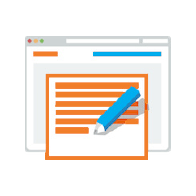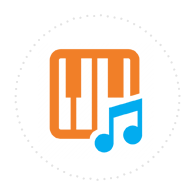Musika Quick Stats
24 Years
Since We Started
41,456+
Happy Customers
10,769
Cities with Students
3,123
Teachers in Network
Lesson Special - Up to 20% OFF! Get Started Now with a Risk-Free Trial!
Here are just a few of the many teachers offering Piano lessons in Santa Ana . Whether you are looking for beginner guitar lessons for your kids, or are an adult wanting to improve your skills, the instructors in our network are ready to help you now!
Instruments: Piano Guitar Voice
Through active involvement, you will build a foundation for a lifetime of participation and enjoyment in music, and at the same time have fun while learning. Music education will help develop your self confidence, and each week you will be amazed at your own abilities! I look forward to meeting you and getting you started on your way to a lifetime of music fulfillment. Read More
Instruments: Piano Guitar Ukulele Classical Guitar Acoustic Guitar
All lessons are customized to meet the individual needs and interests of each and every student. Instruction is open to everyone with a love for music and a desire to learn, regardless of age or previous musical experience. I teach fingerstyle playing on nylon and steel-string acoustic guitar. In addition, I teach beginning piano and ukulele. I don't use one specific method book. Over the years, I have developed my own method that I then tailor to each student, depending on their objectives and goals. Read More
Instruments: Piano Voice Violin
Im a creative individual who has always been passionate about music. I started with piano at age 4 and studied violin in college. I was the concertmaster of my Universitys Symphony Orchestra and received music scholarships every semester. I currently perform around Los Angeles as a singer/songwriter. I love helping people discover their confidence and learn music! I attended a music magnet elementary school and have been a participant in honor orchestras, all state orchestras, and many chamber groups. Read More
Instruments: Piano Violin
I am an active member of Music Teachers Association of California (MTAC). My students take the Certificate of Merit (CM) test annually in performance, theory, sight-reading and ear training. Taking the CM test is optional but highly recommended. I also make sure my students have plenty of chances at performing on stage at recitals by organizing my own recitals or joining forces with other MTAC teachers. Having a recital to practice for is a great motivation for students to practice daily and gives the parents the chance to see their children's accomplishments. Read More
Instruments: Piano Saxophone Flute Clarinet
I have been a working music teacher and professional musician since 2003. My work has taken me all over the world, from exotic, global itineraries on board 5-star cruise ships, to the some of the top music venues in New York City, as well as the homes and classrooms of many satisfied students. I graduated from the New England Conservatory of Music, with a B.M. in Jazz Performance (saxophone). I also hold a Certificate of Eligibility in K-12 Music from the New Jersey Department of Education, as well as a Substitute Teaching Certificate (specializing in music) for Sussex County school districts in New Jersey. Read More
Instruments: Piano Drums Synthesizer Latin Percussion Keyboard Djembe
When will I start to see results?
Results can be seen within a week of practice. Depending on what instrument we study together, you will be humming along to songs on the radio, tapping your hands and feet to the radio, or playing piano on park benches (assuming you're a beginner).
If you're an intermediate student, you can expect to see signs of growth on your instrument within 1 - 2 lessons. If you keep with your practice routine, your chops (muscles) will grow, and you will start to build muscle memory.
After a year or so, the muscle memory will be deeply encoded, and you'll likely never forget the songs you've been practicing.
If we study for more than a year, the possibilities are endless! Generally I like to reassess goals yearly, and we'll set bigger roadblocks for personal achievement. Realize there is likely nothing you CAN'T do with enough practice and determination.
How do I know if my child is ready to start lessons?
A child is ready to start lessons at any age, especially if they show an inclination or attraction to musical instruments, percussive toys, etc.
Anybody who comes from a family of musicians can start any time, and probably will naturally grow into a musician based on exposure. If you have NO musicians in your household, music will likely be a new exercise, but one which will be a lifelong investment in your child's brain performance. Musicians have been proven to score better in areas of math and foreign language, because similar areas of the brain are engaged when practicing music. Music is, in essence, a language of rhythm.
If you're curious about your child starting music lessons, buy them a small drum, have them sit at the piano or keyboard, or start them on a recorder or other small instrument. If they enjoy it, they're ready for lessons!
What advice do you have about practicing effectively?
Practice requires consistency. It's been shown that 5 minutes of practice daily can be more effective than a 1 hour session, 3 days a week.
Jerry Garcia used to wake up at 5am every morning to play scales, and the proof is in the pudding with this ability to play any style, any time, and perform fluidly for hours at a time.
Practice should be a labor of love, and one that you're motivated to engage in. My assigned practice will be geared towards songs you enjoy, songs we've selected together to work on, and something that pushes the envelope of your stylistic comfort zone.
24 Years
Since We Started
41,456+
Happy Customers
10,769
Cities with Students
3,123
Teachers in Network
Trusted as the industry leader, for over 21 years the teachers in our network have been providing Piano lessons in Santa Ana to students of all ages and abilities.
We'll then reach out to the teachers for you.
Schedule the risk-free trial lesson directly with the teacher.
Continue with that teacher or try someone else.








Sandy
Hi there, I am interested in getting my daughter started on either piano or guitar lessons. She is 6, and will turn 7 in May. It would have to be evenings or weekends.
dayana
Im looking for a teacher i have 2 boys one is 4 the other one is 6. They have shown some interest in music if possible i will like to have them take the class together
Chari
Im mainly interested in piano lessons for my 8 year old daughter but also inquiring about guitar lessons and voice lessons for 2 others in my home please.